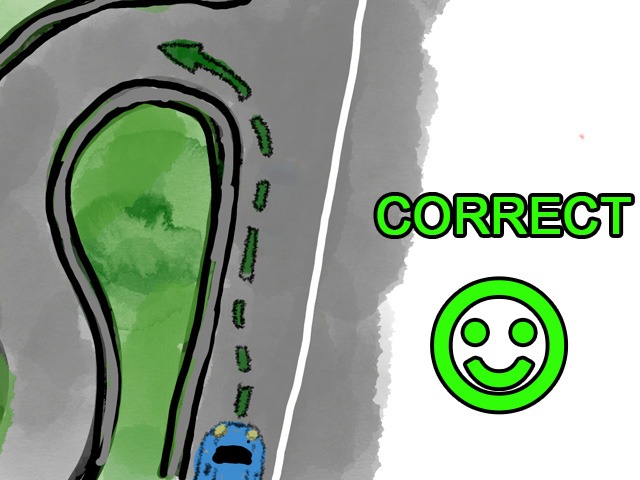
Tests to become more like regular Japanese license exams, which is to say, crazy hard.
As we reported last year, there’s been a recent upswing in applications for Japanese driver’s licenses by people who don’t even live in Japan. This is because Japan has a system known as “gaimen kaigan,” which allows residents of certain countries to convert their own licenses to official Japanese ones.
Other countries have similar systems, but Japan’s was surprisingly lenient in many ways. Mainly, it’s been technically possible to get a license conversion done while simply on vacation in Japan by providing a hotel address as one’s place of residence. The written test was also remarkably easier, wherein an examinee must get seven correct out of 10 questions, which include brain-benders such as “Is this a stop sign?”
▼ “Is it a good idea to plaster your car?” is probably not among the questions, but it might as well be.

This made getting a Japanese license conversion a popular thing to do for Chinese citizens. This is because China was not a part of the Geneva Convention’s international driving permit treaty, but Japan is. Therefore, if a Chinese national first gets a driver’s license in Japan, then uses it to obtain a Japanese driver’s license via the easier conversion test in Japan, they can then use their Japanese driver’s license to drive more easily in countries all over the world.
The total number of foreign nationals getting license conversions, including those properly living in Japan, has more than doubled to over 68,000 in the past 10 years. Unfortunately, last year also saw a record-high number of traffic accidents caused by foreign drivers, at 7,286. A string of recent accidents in particular revealed that the drivers were using gaimen kaigan licenses, causing lawmakers to question whether the current testing system is enough.
As a result, Japan’s National Police Agency announced revisions to the system on 10 July. The first revision would prevent short-term residents from getting a license conversion because only a proper Ministry of Justice residence card will be accepted, and temporary addresses such as those of hotels will be refused. One exception is that Japanese nationals can submit a temporary residence address if they also provide a copy of their family register.
Both written and driving tests will also become more difficult and in line with the test for a normal Japanese driver’s license. The written test will become 50 questions rather than 10, and a 90 percent score will be needed to pass. The driving test will include more skills, such as navigating crosswalks and changing lanes.
▼ Honestly though, crosswalks and changing lanes were pretty simple and common sense. Just remember to HUG THE TURNS!

These rules are not finalized, however. From 11 July to 9 August, the National Police Agency is accepting feedback from the public. After that, they will make further revisions if needed and decide on the final law, which they expect to begin enforcing on 1 October.
So, if you’re a foreign resident of Japan who has yet to convert your driver’s license, now would be the time to do it. Otherwise, you can let your voice be heard with the National Police Agency and try to get a gaimen kaigan system that would be fair for all parties involved.
Source: TBS News Dig
Top image: Pakutaso
Insert images ©SoraNews24
● Want to hear about SoraNews24’s latest articles as soon as they’re published? Follow us on Facebook and Twitter!






